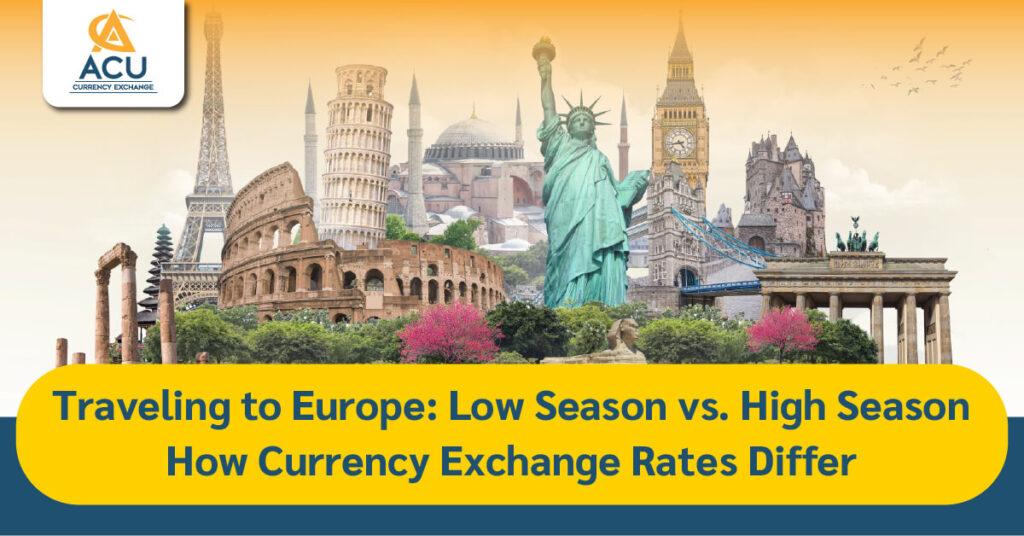Traveling to Europe: Low Season vs. High Season — How Currency Exchange Rates Differ

For those planning a trip to Europe, one important factor that’s often overlooked is the currency exchange rate, which can significantly impact your overall travel expenses. This becomes especially relevant when considering the difference between traveling during the high season and low season.
High Season vs. Low Season
High season typically falls during the summer months, from June to September, and at the end of the year, from Christmas through New Year’s. This is when tourists flock to Europe to enjoy festivals, shopping, and holiday breaks.
Low season, on the other hand, generally occurs in November and from January to March. The weather is colder, snow is more common in many areas, and outdoor activities are limited — leading to fewer tourists and lower prices for travel and accommodation.
Do Currency Exchange Rates in Europe Differ by Season?
Major European currencies like the Euro (EUR), British Pound (GBP), and Swiss Franc (CHF) tend to fluctuate based on global economic factors and travel behavior.
During high season, when demand for European currency increases due to tourism, those currencies may appreciate. For example, in mid-year or year-end peaks, 1 Euro could rise to 38–40 THB (or more) depending on the global economic context.
In contrast, during low season, the Euro may depreciate to around 36–37 THB, which may seem like a small difference. However, if you’re exchanging a large amount of money, that difference can add up significantly.
Factors That Influence Currency Fluctuation:
- Interest rate policies in each country — if the European Central Bank raises interest rates, the Euro typically strengthens.
- Global economic conditions — uncertainty in major economies like the U.S. or China can lead to a weaker Thai Baht.
Tips to Get the Best Value from Currency Exchange:
- Exchange in advance: Do it when rates are still favorable, especially if you’re planning to travel during the high season when exchange rates may spike before the holidays.
- Consider traveling in low season: Not only might exchange rates be better, but you’ll also find cheaper flights, accommodations, and frequent promotional deals.
While currency exchange may seem like a small detail, for long-distance travel like to Europe, it can noticeably affect your expenses — especially during high season when European currencies often strengthen due to global tourist demand. Meanwhile, traveling in the low season often means fewer crowds, better exchange rates, and overall cost savings, making it ideal for budget-conscious travelers.
For anyone looking to exchange foreign currencies in the Huai Khwang area, you can easily do so at ACU Currency Exchange.
Just take the MRT to Huai Khwang Station, Exit 4, then walk 500 meters straight to find the ACU Building Headquarters.
- Check real-time exchange rates during business hours at: https://acu-exchange.com/
- Reserve your currency in advance via Line OA: https://lin.ee/ph4iznU
- Open: Monday – Friday, 10:00 AM – 5:00 PM
- Address: 205/18–19 Ratchadaphisek Rd., Ratchadaphisek Subdistrict, Din Daeng District, Bangkok 10400
- Phone: 02-002-1008, 061-028-3918, 084-324-4893
About the Author

ACU-Exchange
We are committed to providing the best currency exchange experience and the highest level of customer satisfaction, serving both Thais traveling abroad and foreigners visiting Thailand for tourism, education, or work.



